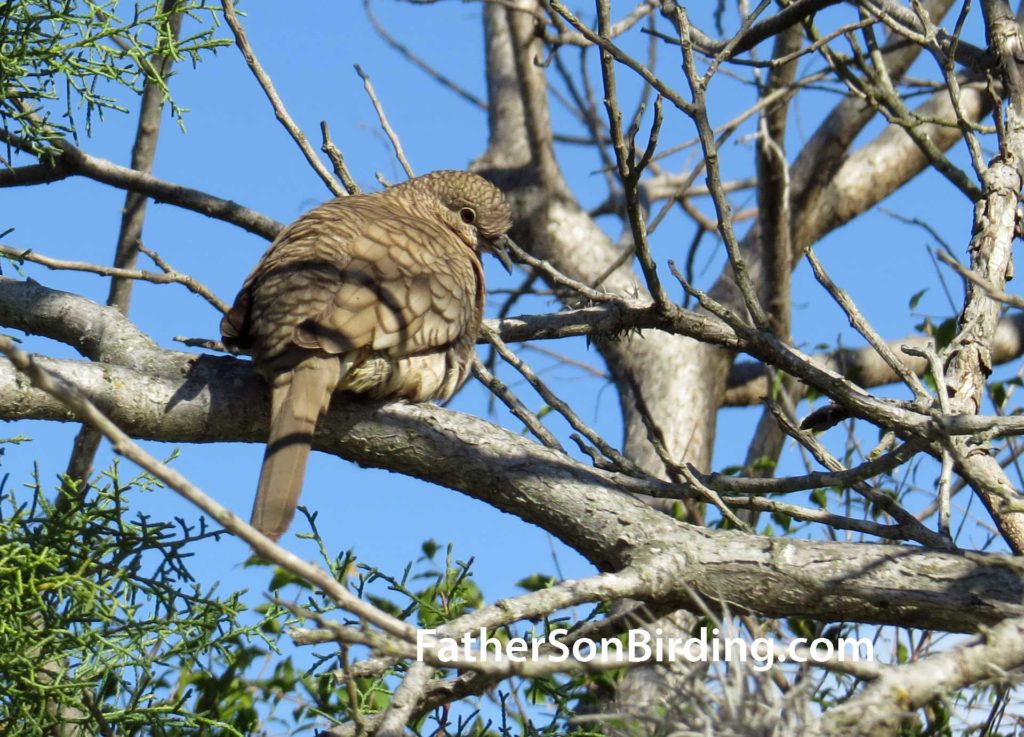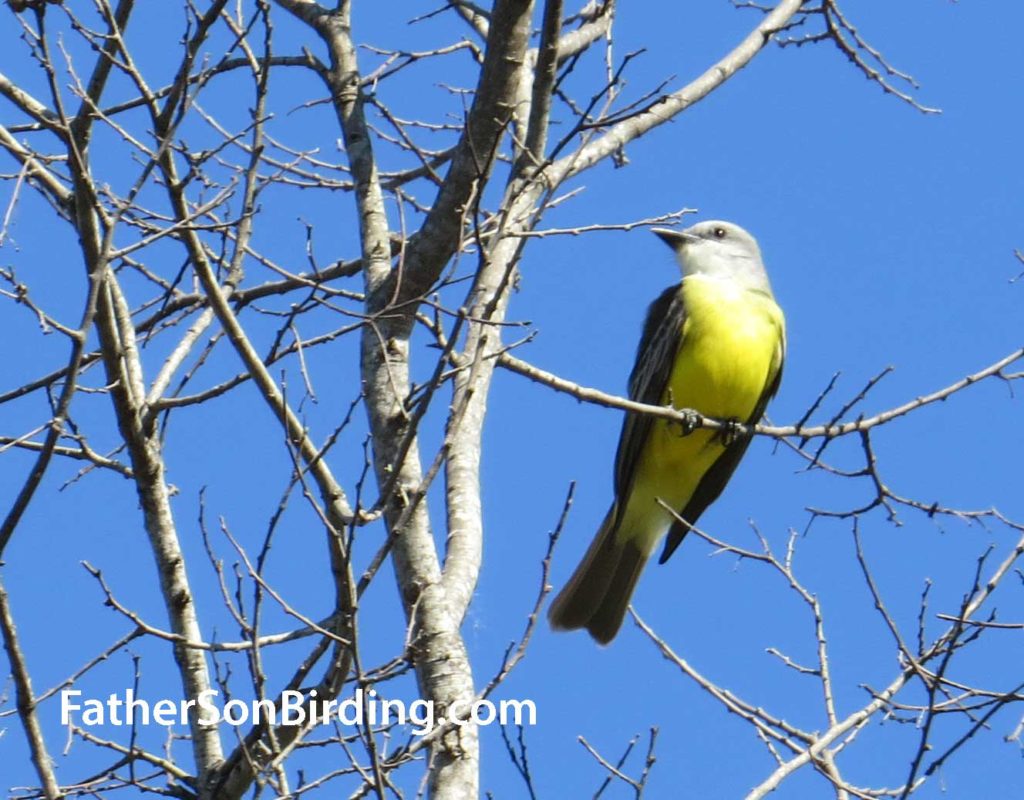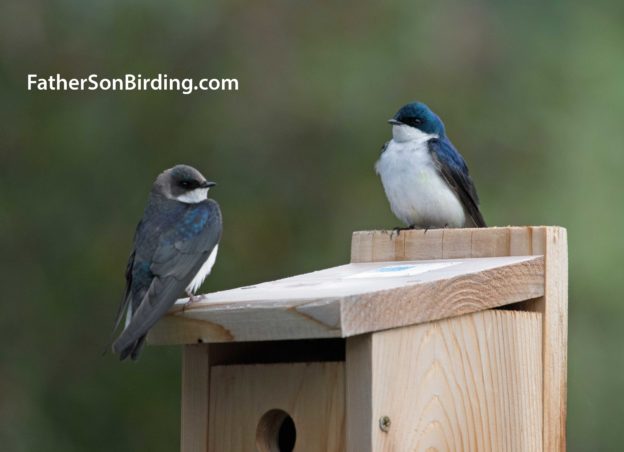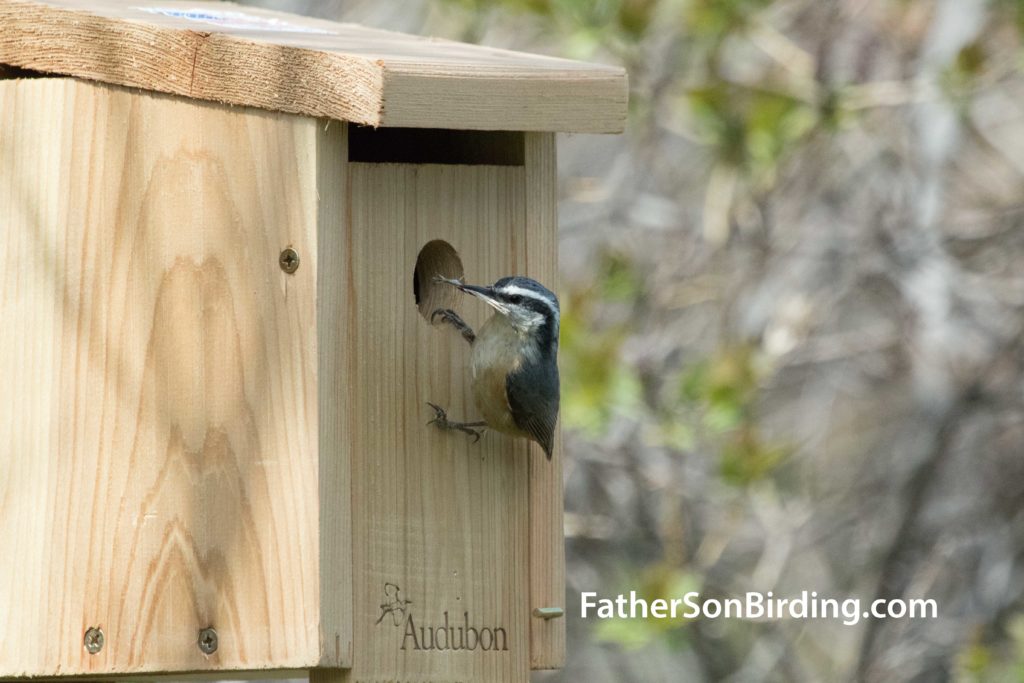To Subscribe to FatherSonBirding—and nothing else—please fill in your email address in the box down in the column to your right. Thanks!
As I recounted last week, I had the recent good fortune to speak at the TCTELA conference in San Antonio. Additional good fortune? My flight home didn’t leave until Monday evening, leaving an entire day to bird. My initial plan was to visit the Mitchell Lake Audubon Center, but naturally the center is closed on Mondays, so I instead opted for the San Antonio Botanical Garden.

Taking my very first Uber ride (worked like a charm), I arrived almost at opening time and proceeded to feel my way through the garden’s 38 acres. The birds were active and I immediately found Northern Mockingbirds, American Goldfinches, Northern Cardinals, and the especially raucous Blue Jays among other common species. My main targets of the day were Ladder-backed and Golden-fronted Woodpeckers, as they’d both shown up on recent eBird checklists, but neither those nor other extraordinary species showed themselves. . . that is, until I wandered into a small, unkempt part of the grounds near the back.

With my hearing aids in, I detected the regular contact chip of what I guessed was some kind of warbler and, sure enough, I soon spotted a Yellow-rumped. I also saw another tiny bird dive into a bush, but failed to get a good look. “Just stand for a minute and be patient,” I told myself. Sure enough, the mystery bird flew into a closer bush and, even better, I got my binocs focused on it. I didn’t recognize the markings at first, except that I knew it was not a warbler. Then, I saw the distinct pale eye of a White-eyed Vireo. Whoo-hoo! And if that wasn’t enough, moments later, I spotted the furtive brown figure of a Long-billed Thrasher! Now, we were gettin’ somewhere!
Exploring more, I discovered Inca Doves, Red-shouldered Hawks, and Black Vultures, but after a lunch break, bird activity took a nosedive along with my birding enthusiasm. Before summoning another Uber, however, I decided to return to the same unkempt spot as before. Jackpot! There, I picked up more Yellow-rumpeds, an Orange-crowned Warbler, and a Blue-gray Gnatcatcher. But who was making those annoying cheeps, sometimes punctuated by a loud rising and falling call”? I followed the sounds for more than ten minutes. Finally, I spotted a gray bird with brownish wings and a vivid mustard breast on a branch.

Right away, I knew it was a king bird, but which kind? A quick look at the eBird checklist pointed to Couch’s Kingbird, which I confirmed by listening to its “Beer!” call on my phone.
I left the garden without my coveted woodpeckers, but feeling pretty good about the birds I’d been able to find. The day also reinforced a lesson for botanical gardens and yards alike: for birds, messier is betterer!





